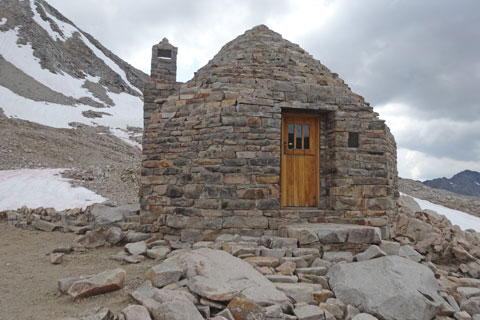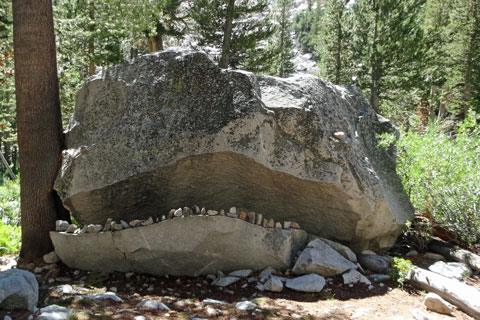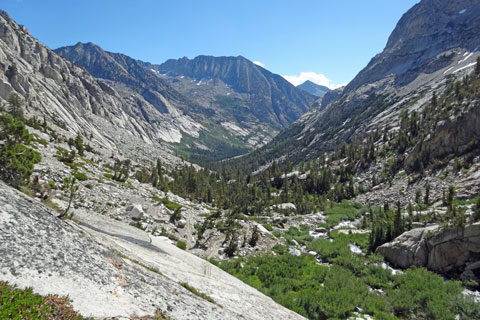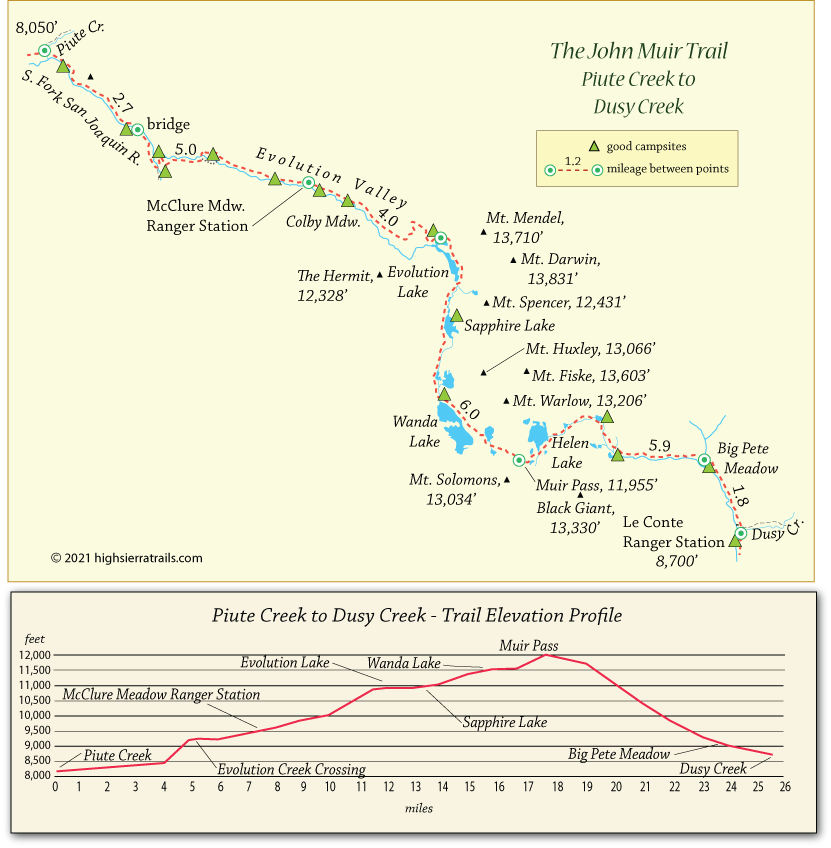John Muir Trail Map 5
Piute Creek to Muir Pass
The John Muir Trail through Evolution Valley, over Muir Pass, and down the LeConte Canyon is one of the most dramatic sections of the entire 220-mile route. An easy trail leads to the foot of the climb to Evolution Valley. Switchbacks and stiff uphill hiking take hikers to the entrance of magnificent Evolution Valley. Ford Evolution Creek at an easier place a few hundred yards upstream from the official trail crossing. Plan to spend a day or two enjoying picturesque McClure Meadow. A ranger station is beside the trail. Then continue on to the upper end of the valley at Colby Meadow.
The climb at the head of the valley leads to a series of large lakes - Evolution, with a few small trees, and then Sapphire and Wanda lakes (shown above) - both above timberline. Campsites beyond Evolution Lake are exposed and often cold. The final push up Muir Pass (11,995') is fairly easy. On the summit stands the stone Muir Hut.
Muir Pass to Dusy Creek
Once across Muir Pass descend to Helen Lake where unsheltered camping is available if needed. Beyond, the trail enters challening terrain where hiking poles are appreciated. Eventually the path leads to the upper reaches of LeConte Canyon and down past Big Pete and Little Pete meadows where campsites among mature trees are excellent. Less than a mile beyond Little Pete Meadow at Dusy Creek is the LeConte Ranger Station. More good campsites are found there.
Shop Amazon for: Hiking Poles
Along the Way
Muir Hut
The stone hut on the summit of 11,955-foot Muir Pass as erected in 1930 by the Sierra Club. The structure was based on a design by Henry Gutterson. The 16-foot by 16-foot octagon hut was originally known as the John Muir Memorial Shelter. The interior is a single room with a corbelled stone ceiling, stone benches, and a fireplace. The hut was added to the National Register of Historic Places in 2016.

Monster Rock
Monster Rock, noth of Big Pete Meadow, is a popular stopping spot along the trail. Photographs with someone looking terrified posed inside the jaws are common.



